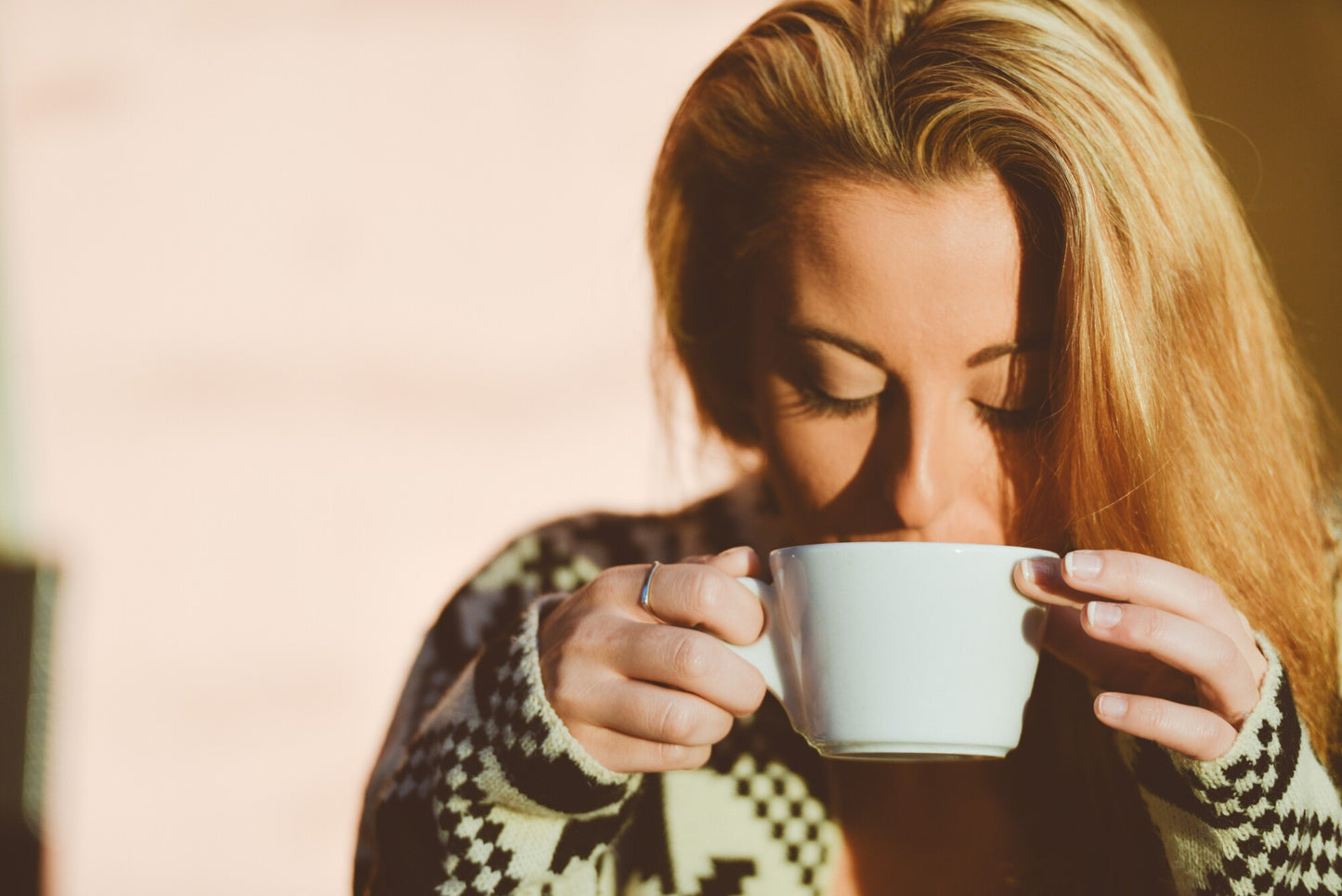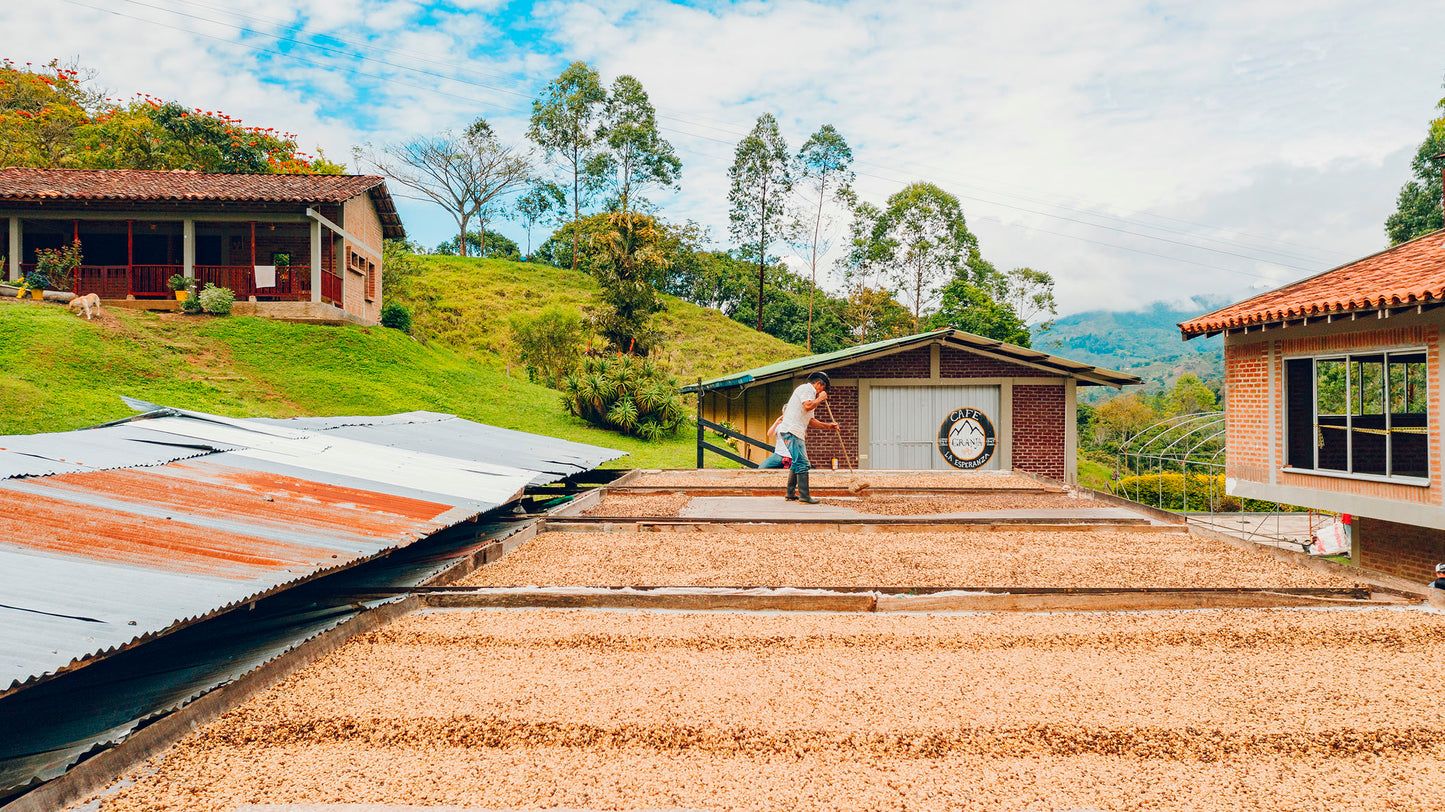
You know the feeling. You wake up after a late night, bleary-eyed, and a bit confused. The alarm bell's pinging as you summon the energy to move.
Work is pending. The late bells are ringing.
Then you remember it. That uplifting aroma of strong coffee beans in the kitchen. Here's your ticket.
You brew yourself a cup and take a deep inhale.
Your first sip is a tonic. Suddenly, the whole day is before you.
You savor the first rays of sunlight as you ponder, 'what is the strongest coffee?'
Well, we're here to tell you. Pour yourself a cup and read on.
What is the Strongest Coffee?
That depends on how you define strong. Do you mean a strong flavor? Or do you mean the caffeine content?
The best strong coffee brands get creative with their beans, roasts, and brew methods. Strong coffee is now an art form.
Some brands pick beans with the highest caffeine content. Other brands go for flavor over all else.
Let's take a look at how they do it.
Strength by Flavor
Coffee flavor consists of sweetness, body, acidity, aroma, and aftertaste. You also have an element called mouth feel. This is pretty much what it sounds like: the weight and viscosity of the coffee as you swill it around.
Certain beans, roasts, grinds, and brew methods have distinct flavors. The water-to-coffee ratio is also key to how strongly these flavors manifest in your cup.
Strength by Caffeine Content
Caffeine is an alkaloid found in things like chocolate, tea, guarana, and well, coffee. It creates the psychoactive stimulant effects of coffee. That jolt of energy and focus is caffeine working its magic.
If you determine coffee strength by its effect, brew with high-caffeine beans. Let's take a look at the two most popular coffee beans on shelves today: arabica and robusta.
Coffea Arabica
Coffea arabica is the coffee-lovers coffee. Pick up a bag of premium coffee beans at your local store, and they will most likely be 100% arabica.
Arabica is native to East Africa, and most sources point to Ethiopia as the original home of arabica. From there, coffee arabica made its way to the Middle East and Europe.
Arabica produces larger beans with higher acidity and less caffeine than robusta. it has a smooth taste with hints of chocolate, dark fruits, nuts, and caramel. But that depends on how you brew it.
Coffee Robusta
Also known as Coffea canephora, robusta is native to the lowlands of West and Central Africa. It is hardier than arabica and easier to grow. Hence the name, robusta.
Robusta has more caffeine and lower acidity than arabica. Its beans have a bitter taste, stronger than arabica. You may notice a grainy, nutty taste, but again, that depends on the brew.
Robusta is cheaper to produce and grows faster, but its taste is less popular than arabica. Blends tend to use robusta for its caffeine content and arabica for its smooth flavor.
Feeling Exotic?
There are rarer coffee beans out there. The world of coffee expands way beyond these two. Try Hacienda Esmeralda Natural Catuai for a taste of the Panamanian mountains.
You can travel all over the globe with coffee. Each cup carries a sip of its heritage and the culture of its lands.
Dawn to Dusk: Types of Coffee Roasts
Coffee is a fruit - fun fact. Those little beans are the seeds of the coffee cherry. When you pick and peel them, they are green and fresh.
We need to give beans a good roastin' before they make it into our cups. The way we do this will affect how strong our coffee tastes and its caffeine content to an extent.
Darker roasts have a more intense flavor than lighter roasts. Lighter roasts contain more caffeine by weight, but the amount is negligible. Unless, you are extremely tired, of course.
Light Roast
Light roasts spend less time in the hot hot heat, and as such, they have a lighter color and flavor. Their caffeine content is higher though. Zing!
The lightest roasts keep a little of their original grassy freshness. Fruity or herbal aromas stay in the beans too, so if these are your priorities, light roasts are for you.
Medium Roast
Rich flavors start to develop as the coffee beans crack and caramelize. Fresher flavors turn to heavenly caramel smoothness. Molasses and cocoa notes start to tease your taste buds.
If you need a morning lift, medium roasts are a perfect balance of flavor and energy.
Dark Roast
It's getting hot in here. Decadent deep, dark, chocolatey flavors bubble to the surface. Bitterness nudges out the sweetness. Less acidity means you feel the weight of those bold flavors on your tongue.
Dark roasts are a true indulgence for armchair coffee sippers. They have the strongest flavor of all the roasts.
A Word on Espresso
Espresso beans are the same as regular coffee beans but the way you prepare them is different. Most espresso blends are arabica with a touch of robusta for added oomph.
In the roaster, espresso goes all the way over to the dark side. That accounts for its intense flavor.
Producers grind the beans finer too. This means the alkaloids and other goodies dissolve faster in water. Then there's the brew method.
Throw espresso beans into a filter brew, and you still have filter coffee. Espresso needs an espresso machine to make it.
Espresso machines pressurize boiling water and steam as they power through your beans. This results in the fast, bold shot of coffee we all know and love.
There's one thing we've missed, and it makes a huge difference to the strength of your coffee. Can you guess?
Coffee Strength by Brew Method
Any time you mix hot water and ground coffee beans you make a brew. Simple, but today's variations make both art and science proud. There are so many brew styles, it's hard to know where to start.
Coffee-to-water ratio is key to how strong your coffee tastes. Concentrated coffee will hit you with caffeine faster. There's more of it crammed into a smaller volume of liquid, hence the term espresso shot.
There are two main brew methods: pour-over and immersion.
Immersion steeps your coffee in water to extract caffeine and flavor. Pour-overs rely on gravity to pull water through the beans.
Let's start with one of the simplest brew methods. It also happens to be one of the strongest.
The Classic French Press
You know, those fancy-looking glass beakers with the plunger on top. They are a classic sight in homeware stores, but they are a perfect way to brew the strongest coffee too.
French presses let coffee grounds mix with and steep in water. This is the classic immersion brew. The grounds sit in the water, rather than just being doused by it like a pour-over.
This extracts more alkaloids and bolder flavors from your coffee. You can steep it as long as you like, the longer the stronger. When you're ready, plunge the plunger to separate the grounds then pour.
Drip Coffee
Drip coffee makers are convenient because you set and leave them. Automatic drip machines grind your beans and pass them to the conical filter. Water then fills the filter causing downward pressure.
The coffee pot is below and waiting. Drip, drip, drip.
Drip coffee is perfect for a morning pick-me-up. You can start it, take a shower, and when you get back you have fresh coffee. Techy-drip machines even have timers, so it's ready when you wake up.
But what about the strength? Well, it could be better, to be honest.
Compared to espresso and French press brews, drip coffee can lack flavor. This is because less of the coffee grounds dissolve in the water, and the paper filter means some of the strong flavors get trapped.
Espresso
We covered the espresso brew method earlier. But all that pressure extracts a whole lot of flavor and caffeine from your fine-ground beans.
Espresso packs a wallop when it comes to strength. Its concentrated brew has heaps of flavor and caffeine. The strongest coffee beans will taste even stronger.
Even if you dilute espresso, it still tastes stronger than other brews at equal ratios. Its concentrated flavor compounds diffuse into the water, dancing around until you take your first sip.
Percolator Coffee
Stylish stainless steel percolators are like portable drip coffee makers. They take direct heat from flame or induction. Percolators have two chambers: one for coffee and one for water.
You put your coffee in the top chamber and water in the bottom one. The water boils and passes through a tube until it reaches an opening above the coffee. Drip, drip, drip.
Percolators create plenty of aroma, flavor, and punch. But they lose out to immersion brew methods and espresso for strength.
Turkish Coffee
Turkish coffee, or Türk kahvesi, packs tonnes of flavor into a tiny cup. Crushed coffee beans boil in a copper, brass, or steel pot until the mixture foams up to the brim. Take it off the heat; let it settle.
Pour it unfiltered into the cup. To stay traditional, this should be small, and you should hold it with your fingertips. Take a sip and let the flavor hit you.
Turkish coffee can be so thick you can stand your teaspoon up in it. In terms of flavor, this is one of the strongest brew styles.
It has less caffeine than you would expect. The coffee is more or less cooked before serving, so most of the caffeine burns away. This is perhaps why, in Turkish coffee houses, people can sip cups all day while chatting about life.
Try that with espresso. You'd bounce off the walls like a caffeinated kangaroo before taking to the skies.
Cold Brew
In a rush? Cold brews are not for you. This brewing method takes between 12 and 24 hours, but it has more caffeine than most of the others.
Cold brews use immersion to extract alkaloids and flavor. Caffeine is water-soluble, and cold brews put more of it into your glass. Their long brew times allow a more complete extraction than most hot brews.
Without heat though, fewer of the bold flavors come out to play. Most cold brews taste mild, so if you want maximum flavor, you'd better turn up the heat!
How Do You Weaken Coffee?
I know what you're thinking, why would I want to know this in an article about the strongest coffee? Well, you can have too much of a good thing.
Maybe you brewed your coffee too strong and have guests. If you want to slow things down a bit, there are a few ways.
Water is the simplest way. Dilute and taste until you reach the desired level. The tricky thing about caffeine is it can take up to 45 minutes to affect you. Best to be on the safe side and sip it.
To weaken strong flavors, a little sugar or sweetener does the trick. Dark roasts tend to be bitter. The right amount of sweetness balances things.
Milk softens bold, harsh flavors. It adds a creamy indulgence to dark brews, like milk chocolate. The calcium in it neutralizes some of the acidity too.
We hope you're still awake after all that, if not, you know what to do!
Where Can You Find the Best Strong Coffee Beans?
So, what is the strongest coffee? The answer is complex, and it depends on your taste.
Our coffee-loving team at Modcup believes in coffee with personality. We embrace the counterculture and feel our coffee beans should do the same.
Our lighter roasts capture nuances of exotic flavors: peaches, blueberries, chocolate liquor, and tastes of the tropics. We want you to have a fresh experience with each cup.
We offer blends and single-origin coffee beans. We have some true rarities you'd be hard-pressed to find elsewhere.
Want to try new coffee flavors each month? Check out our coffee subscriptions!









